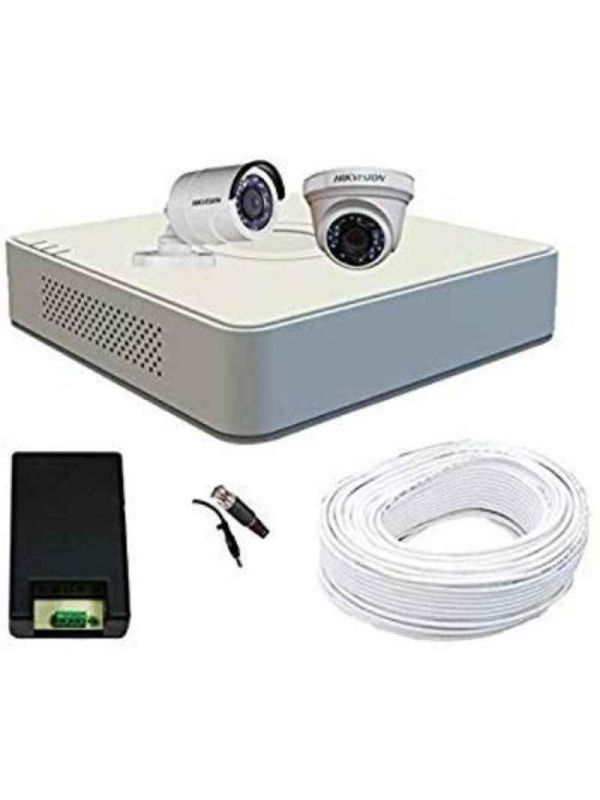
CCTV Camera Kits For Home, Office and Commercial Use
CCTV cameras are used in homes, offices and commercial spaces. They document activity and transmit images to recording devices, monitors and other technology for monitoring.
Some security cameras require a subscription to access their full features. Others, like the Apple HomeKit security camera, use end-to-end encryption to keep personal data private.
High-Definition (HD) Cameras
High definition security cameras are a great way to keep tabs on your establishment. These cameras are used to record footage of anyone who enters your premises so you can be sure no misconduct is taking place. They also help prevent employee theft, which can be a big issue for small business owners. In fact, a University of Cincinnati study found that 64% of small businesses reported that they experienced employee theft.
HD security cameras come in two forms: 720p and 1080p. Both are 1920 x 1080 pixels and offer excellent image clarity for a variety of applications. In addition, 720p offers night vision and remote viewing for a comprehensive solution.
The difference between HD and megapixel is that megapixel cameras have a higher pixel density than traditional CCTV cameras. This allows you to zoom into the scene and see fine detail that would not be possible with an SD camera.
If you have an existing surveillance system that uses coax cable, then a new HD surveillance system is the best option for your facility. These systems are easy to wire and can easily be integrated with your current equipment, preserving the investment you’ve made in your business. Additionally, these systems can be upgraded to 4K if desired without losing your existing coax infrastructure.
Power over Ethernet (PoE)
Power over Ethernet (PoE) is an ideal power solution for IP security cameras. This technology simplifies cabling by sending both data and cctv camera kits power over a single network cable. This eliminates the need for a separate power wire and reduces installation costs, since you don’t have to hire an electrician to run additional electrical cables.
PoE works by using unused pairs in an Ethernet network cable to carry electricity. There are four twisted pairs in an Ethernet cable; two of these pairs are used for fast network data, and the remaining two can be used to carry power. The network switch detects the power on these twisted pairs and delivers it to the camera.
This allows you to deploy cameras in remote or awkward locations where access to AC power is difficult, impractical, or impossible. It’s especially useful for WAPs, CCTV camera placements, and digital signage on the sides or tops of skyscrapers.
A network switch with built-in PoE will automatically detect and deliver power to compatible devices over an Ethernet connection. You can also use a PoE injector to add PoE compatibility to non-PoE network switches or to extend a current PoE cable run. The injector inserts a tap into the wire and redirects current from one twisted pair to the other, while the network switch maintains the data signal.
Wireless
Many of today’s security cameras do away with obtrusive wires running across floorboards or through walls. Instead, they use Wi-Fi to communicate with a control panel or smart device. This allows for more flexibility in placement, and it can be less expensive to install. However, these wireless systems are still dependent on a power source and can become inoperable during a power outage.
In addition, the range of a wireless camera depends on its distance from the receiver. Things like brick walls, concrete floors, and large trees can interfere with the signal. Additionally, other devices using the same frequency as a wireless camera can also cause interference. For example, signals from cordless phones and routers can interfere with the signal strength of a camera.
Some cctv camera kits offer cloud storage to allow you to access footage from anywhere. However, Night Owl’s hybrid security DVR and NVR do not support cloud storage at this time. This means that your camera’s footage will only be available locally on your home network or an external hard drive connected to the recording device. This is a great option for businesses and homeowners that want to keep their footage private and safe cctv camera kits from hackers. It also offers greater functionality as you can monitor your footage without a connection to the internet.
Network Video Recorders (NVRs)
A network video recorder (NVR) enables you to connect multiple IP cameras to the device and view footage remotely. It can also be used to monitor an entire site, and it will send alerts or notifications as well as backup recordings on cloud storage solutions.
A business-grade NVR can provide better surveillance capabilities than an analog DVR, such as cloud-based security monitoring and health checks. It is scalable, and it can be installed on-site, in the cloud or in an IT datacenter. It can also be bundled with the VMS of your choice to make it easy to set up and use.
Some NVRs can be connected to the internet using a wired or wireless connection. This is more reliable than an analog camera system, which can be prone to disturbances that could result in lost footage. However, it is important to consider the bandwidth and reliability of your network connection when deciding on this option. It also exposes your network to cybersecurity risks.
NVR systems can be powered via PoE or non-PoE switches. The former will have PoE ports and support PoE compatible cameras, which can be plugged into the NVR with an Ethernet cable. Non-PoE models will have no ports for connecting cameras, but they typically have built-in scan functions that can trace the camera on the network.
